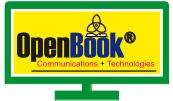IMPLEMENTATION OF DERIVATIVE FREE OPTIMIZATION METHODS
ABSTRACT
Let f be a continuous function on Rn, and supposed f is a smooth nonlinear function, such functions arise in many applications, and very often minimizers are points at which f is not differentiable. Of particular interest is the case where the gradient and the Hessian cannot be computed for any x. In this thesis, two methods are presented for implementation of derivative free optimization. The finite difference representation of the gradient and Hessian in Quasi Newton method and the derivative free Trust Region method. We showed that if f has a unique solution, then the set of all the step length (h) generated by the algorithm converges globally. Three test problems are presented and with the use of MATLAB (R2007b) software the effectiveness of the methods is shown. Numerical results are presented demonstrating the robustness of the algorithm and the result compared favourably with some existing algorithms.
CHAPTER ONE
INTRODUCTION
1.1 Background to the Study
This research is centered on optimizing a function of several variables, whose derivative is unavailable.
Each and every one of us takes decisions in the course of our day-to-day activities, in order to accomplish certain tasks. Usually, there are several, perhaps many possible ways of accomplishing these tasks. Although some choices will generally be better than others, consciously or unconsciously, we must therefore decide upon the best-or optimal-way to realize our objectives.
For example, all of us at one time or another, find it necessary to drive through city traffic. We could attempt to find the shortest possible route from point A to point B without concern for the time required to traverse this route, or alternately, we could seek out the quickest though not necessarily the shortest route between A and B. As a compromise, we might attempt to find the shortest path from A to B subject to the auxiliary condition that the transit time, does not exceed some prescribed value.
In a classical sense, Optimization can be defined as the art of obtaining best policies to satisfy certain objectives, at the same time satisfying fixed requirements. However, recent advances in Applied Mathematics, Operations Research, and Digital-Computer Technology enable many complex industrial problems in engineering and economics to be optimized successfully by the application of logical and systematic techniques. The development of new and increasingly powerful optimization techniques is proliferating rapidly.
Optimization has been playing an important role in many branches of science and technology such as engineering, finance, probability and statistics. There are many optimization algorithms that have been developed to locate the optima of continuous objective functions. It is obvious that if a point x* corresponds to the maximum of a function f(x), the same point corresponding to the minimum value of the function – f(x). Thus, optimization can be taken to be maximization.
There is no single method available for solving all optimization problems efficiently. Hence, a number of methods have been developed for solving different types of problems.
The existence of optimization can be traced back to Newton, Lagrange and Cauchy. The development of differential methods for optimization was possible because of the contribution of Newton and Leibnitz. The foundations of the calculus of variations were laid by Bernoulli, Euler, Lagrange and Weierstrass. Constrained optimization was first studied by Lagrange and the notion of descent was introduced by Cauchy.
Despite these early contributions, very little progress was made till the 20th century, when computer power made the implementation of optimization procedures possible and this turn stimulated further research methods.
Click to: DOWNLOAD @ NGN5,000/USD20
![]()
